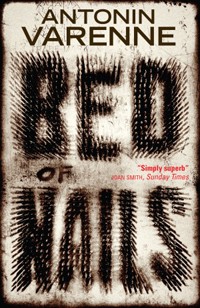 Written by Antonin Varenne — French crime fiction is currently being touted as the next big thing, and here is an unusual debut novel to tantalise your tastebuds. The author’s work has been compared to that of Fred Vargas, who this week shared the CWA International Dagger for 2013 with another French author, Pierre Lemaitre.
Written by Antonin Varenne — French crime fiction is currently being touted as the next big thing, and here is an unusual debut novel to tantalise your tastebuds. The author’s work has been compared to that of Fred Vargas, who this week shared the CWA International Dagger for 2013 with another French author, Pierre Lemaitre.
The detective, Richard Guérin, is one of two main protagonists, and is certainly not your average policeman. Small, bald, always wearing a crumpled yellow raincoat, he lives alone with a talking parrot called Churchill. His career is in tatters. He and his maverick methods have taken the blame for the suicide of a former colleague. So, he has been transferred to the dead-end job of investigating suicides. Tucked away in his dingy office at the back of the Paris police HQ at 36, Quai des Orfèvres, his only ally is his devoted but rather dim assistant Lambert.
Guérin’s two most recent suicide cases share striking similarities. Both concern young men who rushed to their death in very public places. The first man ran stark naked down the middle of a dual carriageway, straight in front of a lorry. The second threw himself from the top gallery in the Natural History Museum in Paris, and was impaled on the skeleton of a whale. Guérin is convinced the two deaths are linked, and that there is a group of people who are driving vulnerable people to these dramatic suicidal actions.
Our second protagonist is John Nichols, an American psychiatrist who has been called to Paris to identify the body of a friend, yet another suicide who bled to death in his own S&M stage show. The two storylines initially seem to run in parallel, without much obvious connection, but eventually they do blend, with great effect. As the bizarre death cult tightens its vice-like grip on the city, Guérin and Nichol’s parallel investigations uncover evidence of shocking abuse, both in the upper echelons of the police force and at the US embassy.
The book seems to have a long, slow take-off, the plot almost secondary to the eccentric characters and the interplay between them. Somewhere along the way, Nichols is helped by an ex-con and current park guard Bunker. This is the most touching part of the book: a beautiful story of building trust and friendship between outsiders. The author does an excellent job of presenting complex characters, outsiders one and all, with whom you can empathise, even if they aren’t particularly likeable.
The second half of the book seems to me much tighter and more exciting than the first. As the pace quickens, Bed of Nails raises fundamental existential questions about good and evil and about exploring life at the edges of polite society. These questions stay with you long after you finish reading the novel. What turns people into bullies and torturers? Why do people want to see others suffer, purely for the pleasure of it? Bed of Nails leaves questions, but mystery lovers might feel some of the puzzling elements of the case remain unresolved.
The comparison with Fred Vargas is overstated. A couple of quirky characters, a cursing parrot and a slightly surreal plot do not comprise a Vargas novel. The style is very different and the story owes more to American thrillers. But despite that, and despite the presence of quite a few American characters, this is a very French novel. Darker than dark, disturbing and with an emotionally wrenching ending that will leave you intrigued and unsure.
MacLehose Press
Print/Kindle/iBook
£5.69
CFL Rating: 4 Stars








